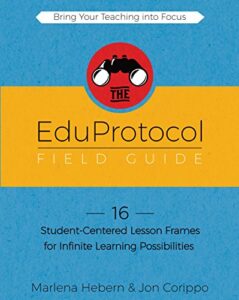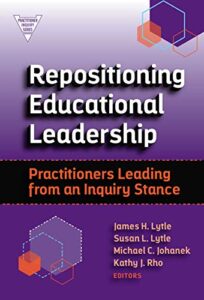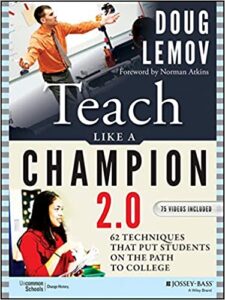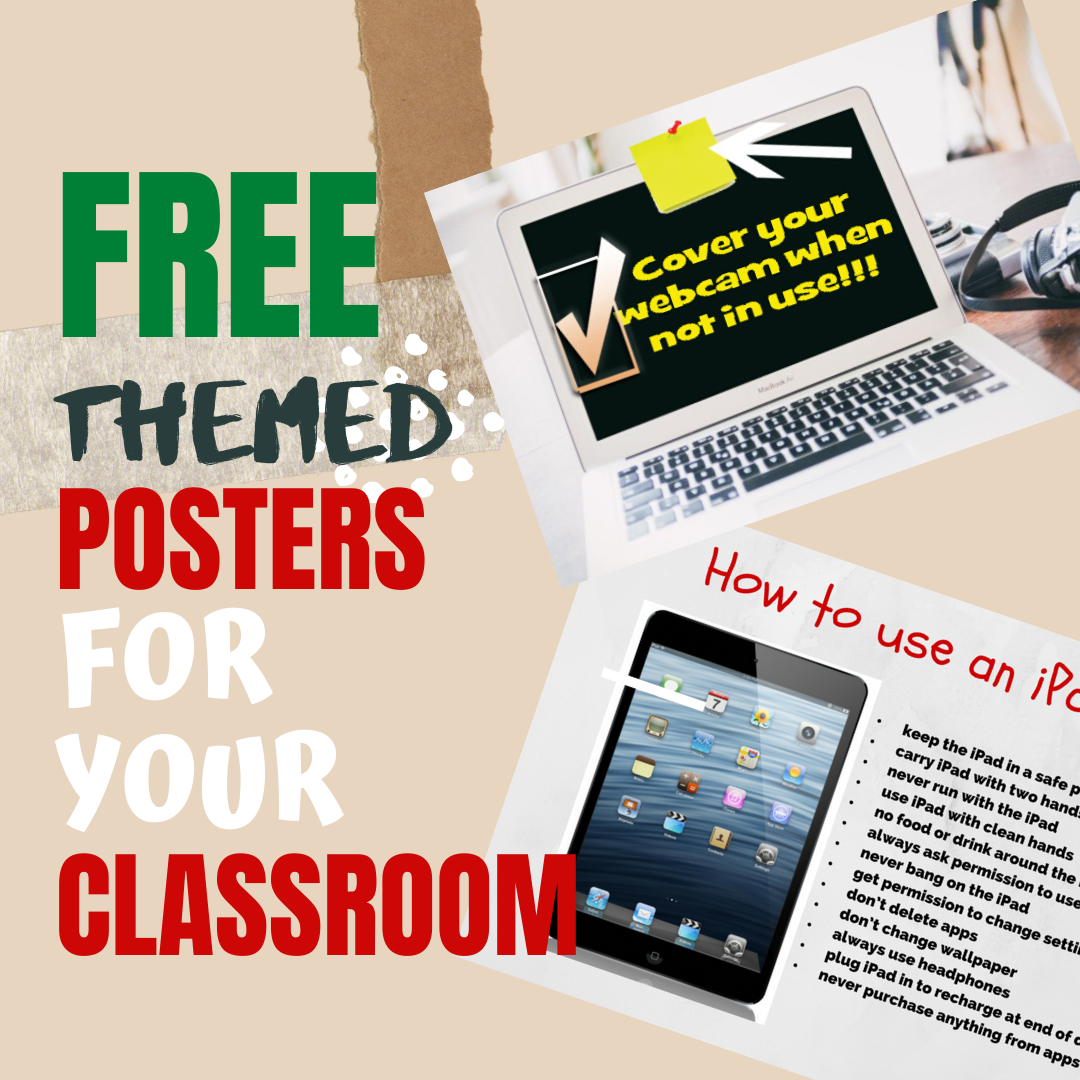 Summer for me is nonstop reading — in an easy chair, under a tree, lying on the lawn, petting my dog. Nothing distracts me when I’m in the reading zone. What I do worry about is running out of books so this year, I spent the last few months stalking efriends to find out what they recommend to kickstart the 2020-21 school year. And it paid off. I got a list of books that promise to help teachers do their job better, faster, and more effectively but there are too many. Since I covered a mixture of books in a past article, many on pedagogy, this time, I decided to concentrate on content that could facilely move from my reading chair into the classroom.
Summer for me is nonstop reading — in an easy chair, under a tree, lying on the lawn, petting my dog. Nothing distracts me when I’m in the reading zone. What I do worry about is running out of books so this year, I spent the last few months stalking efriends to find out what they recommend to kickstart the 2020-21 school year. And it paid off. I got a list of books that promise to help teachers do their job better, faster, and more effectively but there are too many. Since I covered a mixture of books in a past article, many on pedagogy, this time, I decided to concentrate on content that could facilely move from my reading chair into the classroom.
I came up with six. See what you think:
 Bold School: Old School Wisdom + New School Technologies = Blended Learning That Works
Bold School: Old School Wisdom + New School Technologies = Blended Learning That Works
by Weston Kieschnick
In Bold School, Kieschnick lays out an effective, workable education framework that blends common sense with technology while reminding teachers that tech is a useful tool for achieving pedagogic goals, not the opposite.
Why did I pick this book: I’m a longtime teacher who’s sold on technology as a tool but I don’t want it to be the goal. I like how Kieschnick walks teachers through a blend of traditional education wisdom that is kicked up a notch with tech. To me, that’s the best way to use technology to enrich lessons while we meet students where they want to learn. It doesn’t hurt that John Hattie — one of my idols — endorses this approach, calling it “…an essential part of every educator’s toolbox.”
 Disruptive Classroom Technologies: A Framework for Innovation in Education
Disruptive Classroom Technologies: A Framework for Innovation in Education
by Sonny Magana
Despite almost a decade in the classroom, technology remains a disruptive force to both teaching and teachers. In Disruptive Classroom Technologies, Sonny Magana breaks student learning into categories and then shares tech applications that serve each group. He also includes a brief overview, activities, rubrics, and ways to track progress. Published by Corwin, it includes a companion website with resources for implementing the process.
Why did I pick this book: I’m a tech teacher so for me, technology is as fundamental as Shakespeare in High School literature but I have lots of colleagues who are confused, even intimidated by the part technology now plays in classrooms. The approach offered in Disruptive Classroom Technologies is an excellent option for those teachers, as a way to find the right technology for specific students.
 The EduProtocol Field Guide: 16 Student-Centered Lesson Frames for Infinite Learning Possibilities
The EduProtocol Field Guide: 16 Student-Centered Lesson Frames for Infinite Learning Possibilities
by Marlena Hebern
In The EduProtocol Field Guide, Marlena Hebern provides sixteen lesson frames (her name for a generalized lesson plan template) that can be used to teach any academic subject at any grade level. The method is simple: Select a template and blend in your unique grade-level content at the right places. Students quickly become familiar with the layout and can spend their time concentrating on the material rather than the logistics. That’s a win for everyone — and a timesaver.
Why did I pick this book: As a tech teacher, I have often taken this same approach to teaching tech skills and I can tell you it works amazingly well. Hebern is well ahead of anything I did by applying that thinking to any subject, not just tech. To augment the book, she provides a companion website with a plethora of EduProtocol free templates ready to be used in the classroom.
 Google Infused Classroom: A Guidebook to Making Thinking Visible and Amplifying Student Voice
Google Infused Classroom: A Guidebook to Making Thinking Visible and Amplifying Student Voice
by Holly Clark
There are lots of how-to books on using Google apps in the classroom. Most itemize the apps and then explain how they can be applied to classroom situations. Holly Clark’s Google Infused Classroom is different. She starts with an education initiative that focuses on ideals like showing evidence of learning, giving students a voice, and sharing work. With this jumping off point, she picks twenty Google apps that make her mandate happen. Why concentrate on Google apps? In the test of time — about a decade now — Google Apps have proven to be flexible, adaptive, transformative, often change agents, and rarely boring. And, most are free.
Why did I pick this book? Microsoft used to be the powerhouse in school technology but today, according to widely-reported studies, more than half the nation’s primary- and secondary-school students use Google education apps and Google’s Chrome browser-based Chromebooks. When discussing classroom apps, I might as well start with those most adaptable to most education ecosystems.
 Repositioning Educational Leadership: Practitioners Leading from an Inquiry Stance
Repositioning Educational Leadership: Practitioners Leading from an Inquiry Stance
The idea of using inquiry to drive change is both inspired common sense and not entirely obvious. James Lytle (et al)’s groundbreaking work, Repositioning Educational Leadership, collects evidence and examples from school leadership who used inquiry to solve recalcitrant problems and then shares the process with readers. The result is a simple rationale: Education leaders must lead from an inquiry stance.
Why I picked this book: While Repositioning Educational Leadership does stray into academic pedagogy significantly more than the others in this collection, it also provides in-depth examples of how inquiry works in a dedicated classroom. Where other books gloss over the concept with the usual phrases, this one digs into the problems and offers solutions. I found it a satisfying read.
 Teach Like a Champion 2.0: 62 Techniques that Put Students on the Path to College
Teach Like a Champion 2.0: 62 Techniques that Put Students on the Path to College
by Doug Lemov
Lemov’s original Teach Like a Champion book was developed as part of his position with Uncommon Schools, where he shared the secrets of unusually effective schools and teachers, providing videos and more to interested internet readers. The original book itemized forty-nine techniques that “put students on the path to college”, all distilled from observing outstanding teachers at high-performing schools that succeeded in the goal of getting students into the college of their dreams. Out of this international bestseller came Teach Like a Champion 2.0, with sixty-two new examples of great teaching and great learning for beginning and experienced teachers.
Why I picked this book: Pedagogy is fundamental to professional development but examples of pedagogy in action are priceless. If you’re a visual learner in a textual world, you know exactly what I mean.
***
Six books is probably still too many for the balance of summer so here’s the plan: Evaluate what you had difficulty with last year. Consider the promises you made for this summer’s professional development. Now, pick the book(s) that fill those holes. I’d love to hear what they are.
@burgessdave @elevatebooksedu @TCPress @WileyGlobal
More PD
3 Webtools You Can Learn This Summer in “20 in 20”
An Open Letter to Teachers About Online Classes
Jacqui Murray has been teaching K-18 technology for 30 years. She is the editor/author of over a hundred tech ed resources including a K-12 technology curriculum, K-8 keyboard curriculum, K-8 Digital Citizenship curriculum. She is an adjunct professor in tech ed, Master Teacher, webmaster for four blogs, an Amazon Vine Voice, CSTA presentation reviewer, freelance journalist on tech ed topics, contributor to NEA Today, and author of the tech thrillers, To Hunt a Sub and Twenty-four Days. You can find her resources at Structured Learning.




































